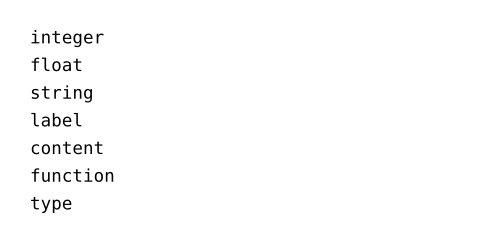type
Describes a kind of value.
To style your document, you need to work with values of different kinds: Lengths specifying the size of your elements, colors for your text and shapes, and more. Typst categorizes these into clearly defined types and tells you where it expects which type of value.
Apart from basic types for numeric values and typical types known from programming languages, Typst provides a special type for content. A value of this type can hold anything that you can enter into your document: Text, elements like headings and shapes, and style information.
Example
#let x = 10
#if type(x) == int [
#x is an integer!
] else [
#x is another value...
]
An image is of type
#type(image("glacier.jpg")).

The type of 10 is int. Now, what is the type of int or even type?
#type(int) \
#type(type)

Compatibility
In Typst 0.7 and lower, the type function returned a string instead of a
type. Compatibility with the old way will remain for a while to give package
authors time to upgrade, but it will be removed at some point.
- Checks like
int == "integer"evaluate totrue - Adding/joining a type and string will yield a string
- The
inoperator on a type and a dictionary will evaluate totrueif the dictionary has a string key matching the type's name
构造函数参数参数是传给函数的输入,写在函数名后的括号中。
Determines a value's type.
#type(12) \
#type(14.7) \
#type("hello") \
#type(<glacier>) \
#type([Hi]) \
#type(x => x + 1) \
#type(type)

valueany必需参数必需参数必需参数在调用函数时必须传入。位置参数位置参数位置参数按顺序传入,不带参数名。
The value whose type's to determine.